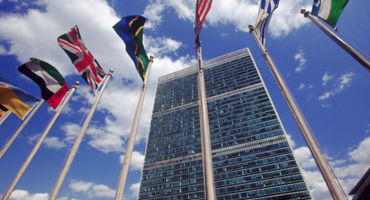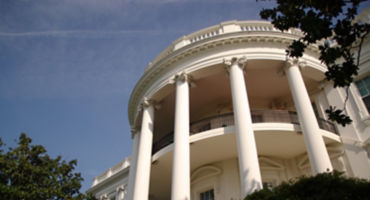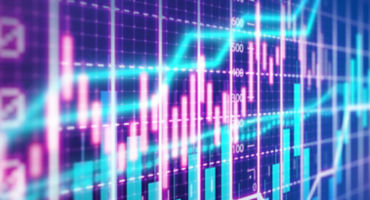- Geopolitical Strategist
Skip to main content
- Funds
- Capabilities
- Insights
- About Us
Asset classes
The views expressed are those of the author at the time of writing. Other teams may hold different views and make different investment decisions. The value of your investment may become worth more or less than at the time of original investment. While any third-party data used is considered reliable, its accuracy is not guaranteed.
It’s been a year since the start of the tragic Russia/Ukraine conflict, which has seen hundreds of thousands of military and civilian casualties. This geopolitical crisis remains a significant market and macro event with an uncertain end, and it presents the very real possibility of further escalation.
On this somber anniversary, I believe we can begin to assess some of the most important longer-term geopolitical, macro, and market outcomes that investors should consider.
Almost none of my national security contacts in Washington, Brussels, or elsewhere across the EU believe we are close to seeing an end to the largest military crisis in Europe since World War II. On the contrary, we may see additional, increasingly intense fighting.
This is because both Kiev and Moscow are taking steps that will likely lengthen the hostilities. From Ukraine’s perspective, the Zelensky government continues to acquire not only the increasingly advanced and sophisticated weapons it needs to launch both defensive and offensive operations against Russian troops, but it’s also benefiting from increased training and intelligence sharing with NATO countries.
Meanwhile, Russian President Vladimir Putin is accelerating Russia’s troop-mobilization efforts, while attempting to bolster the country’s defense and industrial bases. We’ve also seen ongoing shifts in Russian military leadership structure, and in recent weeks, new momentum around Russian offensive operations.
Accordingly, battlefield dynamics — the most important variable to monitor — are fluid. Thus, the list of potential outcomes is wide, ranging from a military collapse by either side to regime change.
As for worse-case scenarios, the crisis remains in an escalatory phase, including the slim (but not zero) possibility that military action spreads to NATO countries or, potentially, triggers the use of tactical nuclear weapons.
This military clash remains a geopolitical crisis of the highest order and has already transformed the global security environment in important ways.
First, the conflict has strengthened the US/transatlantic alliance across economic, political, and especially military dimensions. We didn’t see this degree of political unity during the previous US administration, but it’s now likely to continue beyond the current situation in Ukraine, as is a deepening transatlantic policy focus on national security. As has been demonstrated countless times in history, hostility and tragedy at this scale is clarifying to policymakers.
Second, the onset of the conflict prompted NATO to extend an invitation to Finland and Sweden. This speaks to the fact that the fighting in Ukraine has produced a new security environment across Europe — an institutionalized response that will likely constrain Moscow’s military options in Europe in the long term.
The clash in Ukraine has also resulted in large boosts in defense spending across Europe. This comes at a time when militaries around the world are modernizing their forces and assessing new technologies in use on Ukraine’s battlefields. While political unity in the EU will likely be a persistent challenge given differing domestic priorities, I suspect these defense spending increases and doctrinal military shifts are structural and will outlive the conflict’s end.
Last, but not least, the situation in Ukraine could impact China’s complex relationships with the US and governments across Europe.
I believe that prolonged fighting in Ukraine could lead to accelerated great-power competition among some of the world’s strongest countries, including (but not necessarily limited to) the US, China, and Russia. This could be particularly true if Moscow is seen as continuing to launch attacks against Ukrainian civilians and infrastructure, in addition to military targets.
It will also likely sharpen the political narrative in Washington that the world is splitting into “democracies and autocracies.” The resulting global geopolitical instability could add further fuel to deglobalization efforts rooted in strategic sectors on the front lines of great-power competition, including semiconductors, biotech, critical minerals, artificial intelligence, and quantum technologies, among other industries.
Finally, the crisis in Ukraine is likely to produce several long-term macro and investment outcomes that will, in my view, outlive military action.
The crisis in Ukraine is likely to produce several long-term macro and investment outcomes that will, in my view, outlive military action.
First, we’ve seen extraordinary coordination between the US and its European allies on the sanctions front. This is likely to continue well into 2023 as the conflict drags on and could be a precursor for allied sanctions aimed at future geopolitical crises around the world.
The situation in Ukraine, of course, has also focused policymaker attention — and voters — on the critical role of energy not only in Europe, but globally. In particular, it has refocused efforts to wean European economies from Russian oil and natural gas. As such, it’s also placed greater attention on speeding up the EU’s decarbonization efforts.
Both of these developments will likely lead to profound shifts in how investors should think about energy long into the future, particularly as great-power competition — and the still uncertain outcome of the Russia/Ukraine conflict — continue to shape global policy and security backdrops.
Expert

It’s different this time: Trump faces challenging geopolitical dynamics
Continue readingHarris vs Trump: The foreign policy and investment implications
Continue readingURL References
Related Insights

It’s different this time: Trump faces challenging geopolitical dynamics
Our expert explores how Trump may approach the heightened geopolitical challenges his second administration faces.

Four investment perspectives amid a pivotal US election
How can investors reposition portfolios for a pivotal but highly unpredictable US elections? Nick Samouilhan explores potential avenues in conversation with three leading portfolio managers.

Harris vs Trump: The foreign policy and investment implications
Our expert examines expected Harris and Trump foreign policies and their potential impact on the investment landscape.
Decoding the effects of deglobalization
Nicholas Petrucelli outlines the economic, political, and geopolitical underpinnings of deglobalization. He also demonstrates the impact this trend has today and analyzes the investment implications.

China internet: Identifying opportunities amid economic reopening
China’s re-opening and economic recovery from its zero-COVID policy has bolstered our optimism in Chinese internet companies.

China’s economy: Poised to exceed expectations in 2023
With the bar set so low for China's economy, Macro Strategist Santiago Millan thinks it won't take much for an upside surprise in 2023.



URL References
Related Insights
Past results are not necessarily indicative of future results and an investment can lose value. Funds returns are shown net of fees. Source: Wellington Management
© 2024 Morningstar, Inc. All Rights Reserved. The information contained herein: (1) is proprietary to Morningstar; (2) may not be copied or distributed; and (3) is not warranted to be accurate, complete or timely. Neither Morningstar nor its content providers are responsible for any damages or losses arising from any use of this information. The Overall Morningstar Rating for a fund is derived from a weighted average of the three, five, and ten year (if applicable) ratings, based on risk-adjusted return. Past performance is no guarantee of future results.
The content within this page is issued by Wellington Management Singapore Pte Ltd (UEN: 201415544E) (WMS). This advertisement or publication has not been reviewed by the Monetary Authority of Singapore. Information contained on this website is provided for information purposes and does not constitute financial advice or recommendation in any security including but not limited to, share in the funds and is prepared without regard to the specific objectives, financial situation or needs of any particular person.
Investment in the funds described on this website carries a substantial degree of risk and places an investor’s capital at risk. The price and value of investments is not guaranteed. The value of the shares of the funds and the income accruing to them, if any, and may fall or rise. An investor may not get back the original amount invested and an investor may lose all of their investment. Investment in the funds described on this website is not suitable for all investors. Investors should read the prospectus and the Product Highlights Sheet of the respective fund and seek financial advice before deciding whether to purchase shares in any fund. Past performance or any economic trends or forecast, are not necessarily indicative of future performance. Some of the funds described on this website may use or invest in financial derivative instruments for portfolio management and hedging purposes. Investments in the funds are subject to investment risks, including the possible loss of the principal amount invested. None of the funds listed on this website guarantees distributions and distributions may fluctuate and may be paid out of capital. Past distributions are not necessarily indicative of future trends, which may be lower. Please note that payment of distributions out of capital effectively amounts to a return or withdrawal of the principal amount invested or of net capital gains attributable to that principal amount. Actual distribution of income, net capital gains and/or capital will be at the manager’s absolute discretion. Payments on dividends may result in a reduction of NAV per share of the funds. The preceding paragraph is only applicable if the fund intends to pay dividends/ distributions. Performance with preliminary charge (sales charge) is calculated on a NAV to NAV basis, net of 5% preliminary charge (initial sales charge). Unless stated otherwise data is as at previous month end.
Subscriptions may only be made on the basis of the latest prospectus and Product Highlights Sheet, and they can be obtained from WMS or fund distributors upon request.
This material may not be reproduced or distributed, in whole or in part, without the express written consent of Wellington Management.